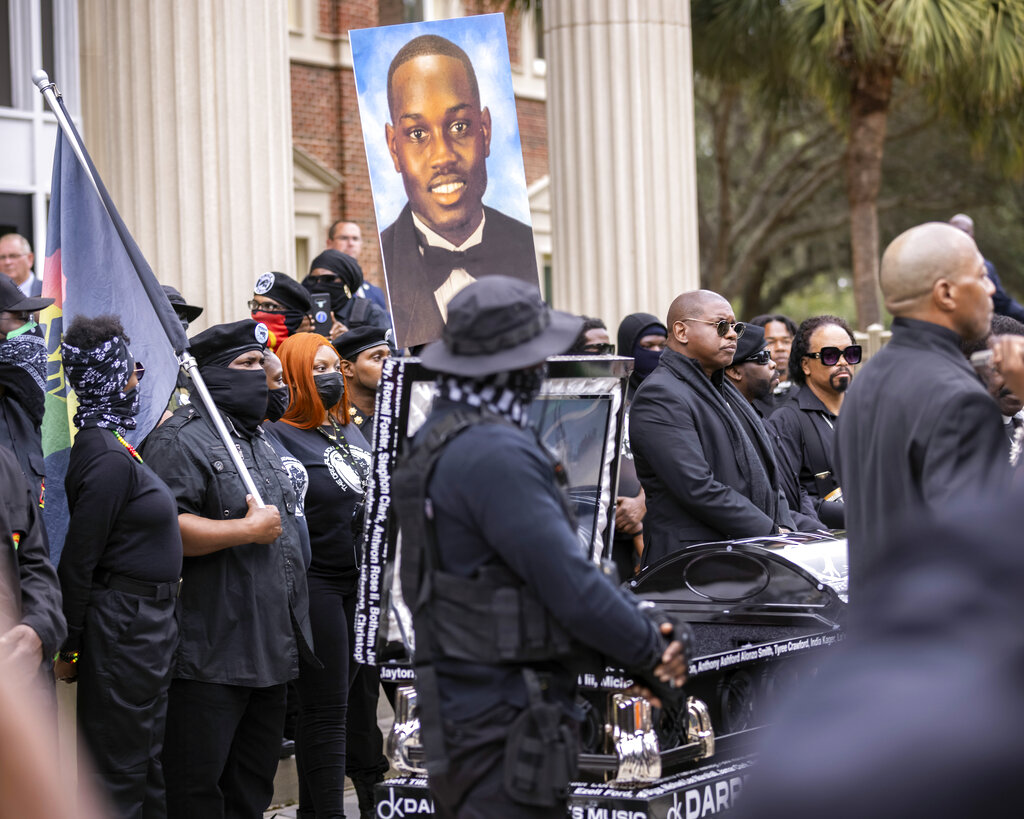
Closing arguments wrapped up Monday in the murder trial of three white men accused of killing Ahmaud Arbery, with prosecutors claiming the 25-year-old black man was shot and killed because of the color of his skin and the defense blaming the victim for his own death.
“You are allowed to defend yourself,” Jason Sheffield, the defense attorney for Travis McMichael, told jurors. “You are allowed to use force that is likely to cause death or serious bodily injury if you believe it’s necessary. At that moment, Travis believed it was necessary.”
McMichael, his father, Greg McMichael, and their neighbor William “Roddie” Bryan have been charged with nine counts each in Arbery’s death, including malice murder, felony murder, and aggravated assault.
They are accused of arming themselves and going after Arbery, who was jogging through their Satilla Shores neighborhood on Feb. 23, 2020. The father and son duo, who have close ties with local law enforcement, chased and cornered Arbery before Travis McMichael opened fire. They claimed they thought Arbery was stealing and that security cameras in an open-framed house under construction had previously caught him on tape.
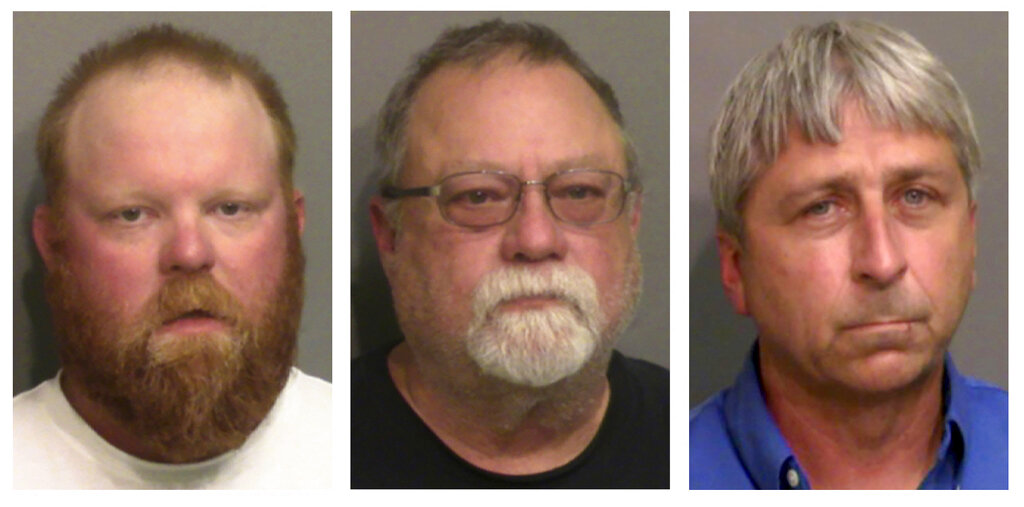
Prosecutor Linda Dunikoski pushed back on the claim, telling the disproportionately white jury that the defendants had no evidence Arbery committed crimes and instead acted on assumptions, gossip, and hate.
“They made the decision to attack Ahmaud Arbery in their driveways because he was a black man running down their street,” Dunikoski said, adding “They shot and killed him not because he was a threat to them but because he wouldn’t stop and talk to them.”
The state called 23 witnesses during eight days of testimony, ending with the medical examiner who performed the autopsy on Arbery’s body and the Georgia Bureau of Investigation’s lead detective in the case.
PROSECUTION RESTS CASE IN AHMAUD ARBERY MURDER TRIAL AFTER EIGHT DAYS AND 23 WITNESSES
The jury was shown graphic close-up photos of Arbery’s injuries, which included large abrasions to his face caused by falling face down in the street after being shot a third time.
The evidence also included a photo of his blood-soaked T-shirt and accompanying cellphone video showing it had been white just seconds before Travis McMichael shot him.
Dr. Edmund Donoghue testified that Arbery was hit by two of the three shotgun rounds fired at him and said Arbery would have probably died from either.
The first shot tore through an artery in Arbery’s right wrist and went through the center of his chest, cracking ribs and causing heavy internal bleeding. The second missed entirely, but the third, fired at point-blank range, ripped through every major artery and vein near his left armpit and fractured bones in his shoulder and arm.
“They can’t claim self-defense under the law because they were the initial, unjustified aggressors and they started this,” Dunikoski said.
Last week, Travis McMichael took the stand in his own defense, testifying he never meant to kill Arbery but was forced to make a life-or-death decision when Arbery allegedly charged at him in front of the truck. It was the first time any of the three men accused in Arbery’s death had publicly told his side of the story.
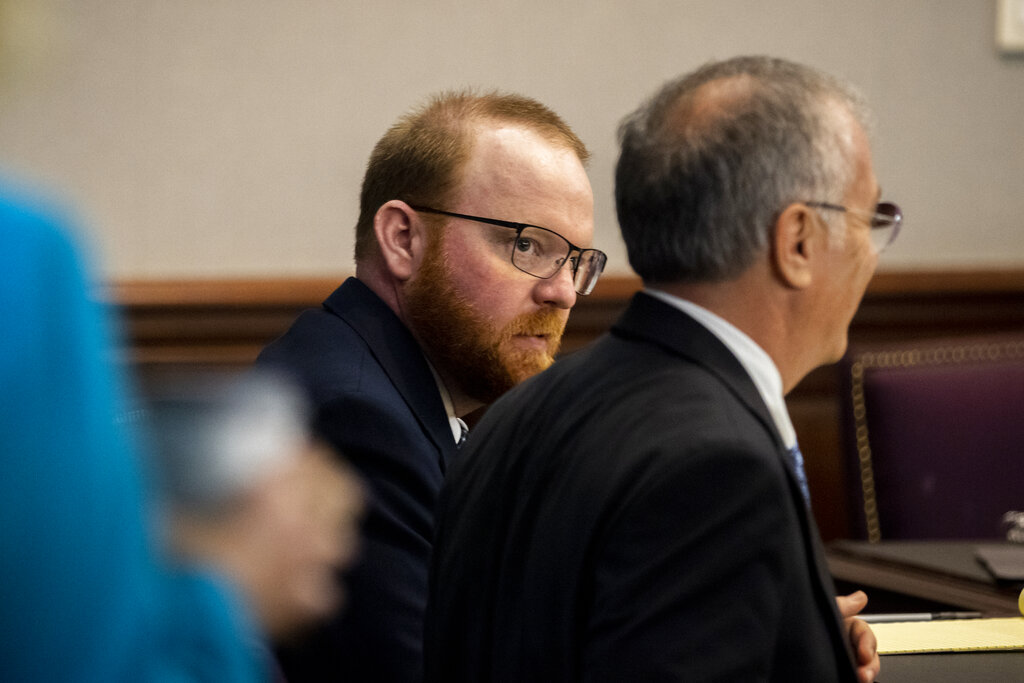
The defense attorneys have repeatedly tried to blame Arbery for his own death.
“He chose to fight,” Laura Hogue, an attorney for Greg McMichael, said.
She claimed Arbery decided “without any sense of reason to run at a man wielding a shotgun, leaving him with no other alternative but to be placed in a position to kill him.”
Referring to a smiling photo of Arbery the jury had been shown, Hogue countered, “A beautiful teenager with a broad smile in a crooked baseball cap can go astray … And years later, he can end up creeping into a home that’s not his own and run away instead of facing the consequences.”
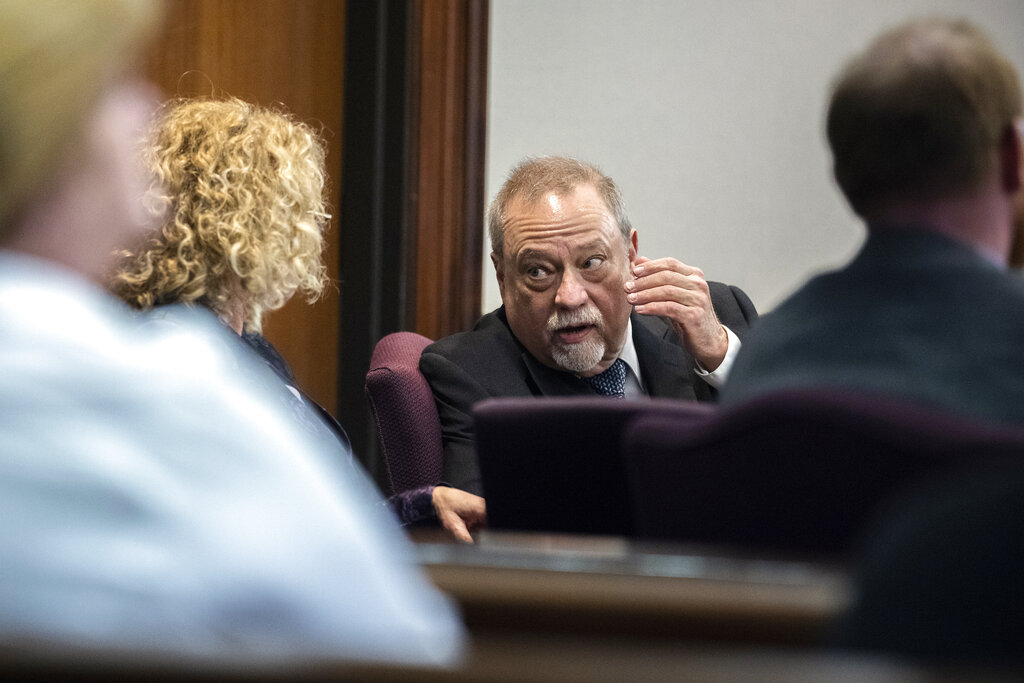
Bryan’s attorney, Kevin Gough, suggested Arbery should have cried for help if he was being chased unjustly.
“Why isn’t he calling out ‘Hey, somebody call 911! There’s crazy people after me,’” Gough said. “Maybe that’s because Mr. Arbery doesn’t want help.”
Gough also suggested Monday afternoon that his client wasn’t smart enough to orchestrate a plot to kill Arbery.
Gough also made headlines after he asked Superior Court Judge Timothy Walmsley to remove the Revs. Al Sharpton and Jesse Jackson from the gallery last week. He argued that Bryan would not be able to get a fair trial if the two civil rights icons were in the courtroom.
CLICK HERE FOR MORE FROM THE WASHINGTON EXAMINER
In response, more than 700 black pastors showed up to the Glynn County Courthouse on Thursday, many carrying signs that read, “Black pastors matter.”
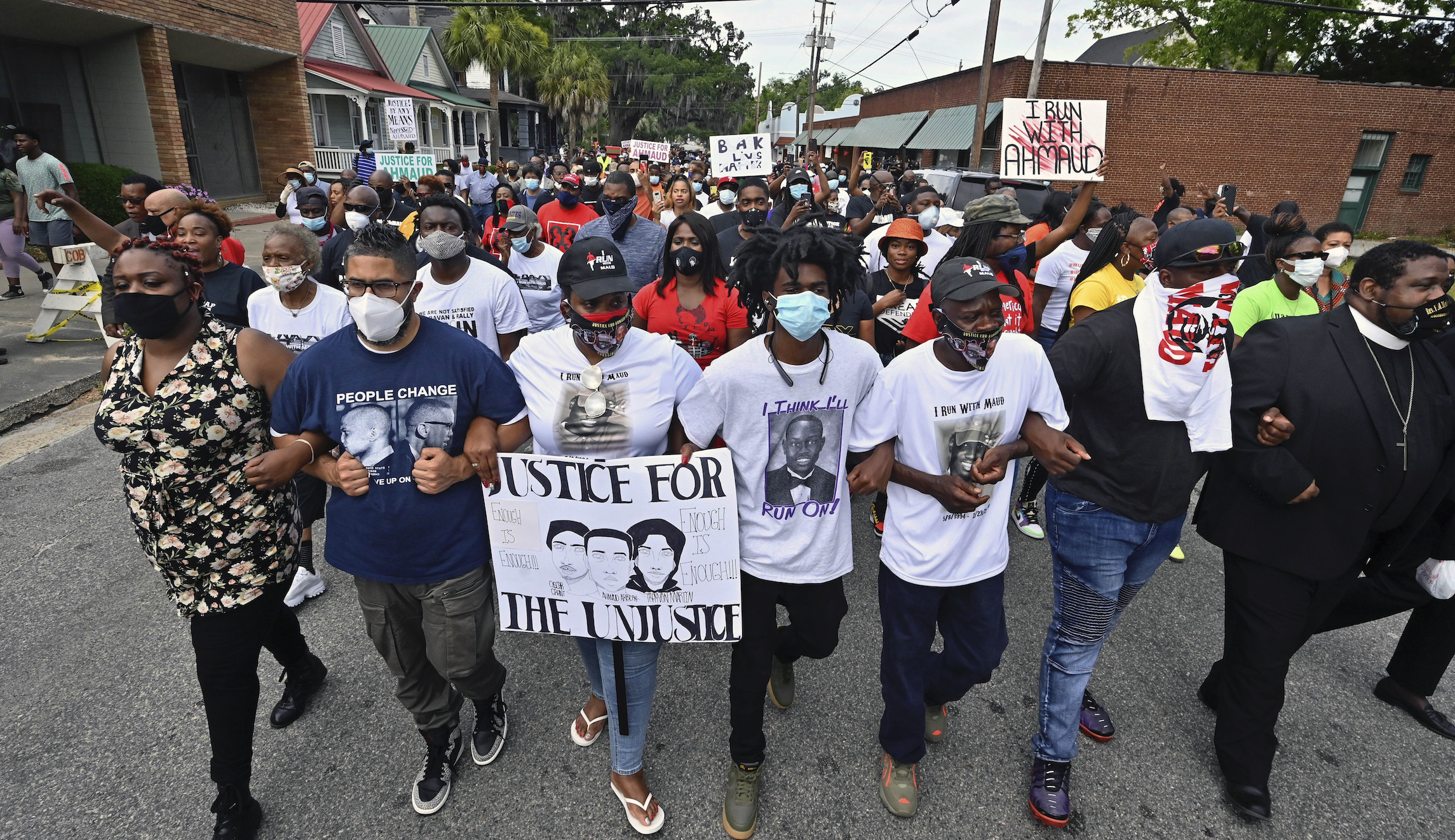
“No lawyer can knock us out,” Sharpton told the crowd.
Walmsley is presiding over the trial at the Glynn County Courthouse after all five judges in the Brunswick Judicial Circuit recused themselves.

